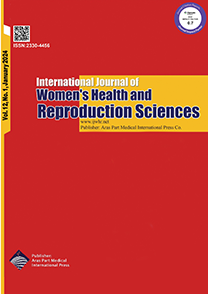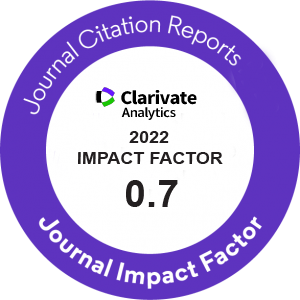| Original Article | |
| Proposing a Model for the Evaluation of the Iranian Maternal Mortality Surveillance System: A Mixed Method Study | |
| Farahnaz Sadoughi1, Reza Majdzadeh2, Afsaneh Karimi3,4 | |
| 1School of Health Management and Information Sciences, Iran University of Medical Sciences, Tehran, Iran 2Knowledge Utilization Research Center (KURC) and Community Based Participatory Research (CBPR) Center, Tehran University of Medical Sciences (TUMS), Tehran, Iran 3Pregnancy Health Research Center, Zahedan University of Medical Sciences, Zahedan, Iran 4Department of Health Information Technology, Paramedical School, Zahedan University of Medical Sciences, Zahedan, Iran |
|
|
DOI: 10.15296/ijwhr.2023.28 Viewed : 2461 times Downloaded : 1411 times. Keywords : Model theoretical, Public health surveillance, Maternal mortality |
|
| Full Text(PDF) | Related Articles | |
| Abstract | |
Objectives: The introduction of a suitable subjective model is the first step in drawing up an evaluation plan. This research was conducted to design an evaluation model for the National Maternal Mortality Surveillance System (MMSS) in Iran. Materials and Methods: This mix method study was carried out in four phases. Firstly, the current status of the Iranian MMSS was analyzed, and secondly, various sources of information were examined to identify the guidelines on the evaluation of public health surveillance systems. The guidelines were compared to identify the evaluation steps and the actions required at each step. In addition, the components of the initial model were identified using an expert panel and through considering the results of previous phases. Two rounds of the Delphi method were employed to determine acceptance or rejection of the extracted components. Results: The obtained model includes four axes: (a) the description of the surveillance system (b) the general evaluation planning (c) implementation of the evaluation and (d) post-evaluation follow-ups. Some components of this model are: the purpose and operation of the system, triggers, purpose and objectives of the evaluation, data collection methods and tools, the method of presenting the findings and giving feedback. Conclusions: This model presents different indicators concerning the importance of the system, questions and indicators for the evaluation of system features, standards for assessment the quality of the evaluation activities, and other important components. Using this information to design the evaluations can lead to comparable evaluation results. |
Cite By, Google Scholar
Online Submission System
 IJWHR ENDNOTE ® Style
IJWHR ENDNOTE ® Style
 Tutorials
Tutorials
 Publication Charge
Women's Reproductive Health Research Center
About Journal
Publication Charge
Women's Reproductive Health Research Center
About Journal
Aras Part Medical International Press Editor-in-Chief
Arash Khaki
Mertihan Kurdoglu Deputy Editor
Zafer Akan






















